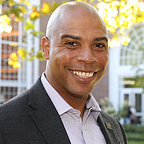Leadership: Can you ENDURE for the long-haul?
By: Hise Gibson & Nadege Benoit
The new normal has highlighted that leading organizations is an ultra-marathon and not a 100 meter-dash. In training for ultra-marathons, runners must have a clear plan to build the appropriate endurance necessary to complete the race. They may train for 6-months up to 12-months to compete in one race. The stress required on their sustainment muscles overtime is needed to be useful in a race that may take three to five days or longer. The opposite is true to compete in a 100 meter-dash. There is a natural ability that training might not compensate for the less than 10-second event. The training necessary to shave milliseconds is very different and far more finite than the ultramarathoner. These events both require running; however, the movement to achieve success are on opposite ends of the spectrum. If we translate this to leaders in 2021, some may have felt that leading their teams through the pandemic’s early days would be like a sprint. We will operate remotely for a few months, create an environment for teams to succeed in this modality, and then by the summer; we will all be back in the office. Unfortunately, by the summer, leaders went from sprinters to running a ten-k, and by Thanksgiving, they were in full ultra-marathon status and completely exhausted. The pandemic has exposed the reality that has been known but consistently overlooked. Leadership is a marathon and not a sprint.
When leadership is considered a marathon, the focus on long-term planning or, in other words, developing strategy is a necessary exercise like the marathoner with a race as an objective. The leader creates a plan to achieve goals, increase productivity, and increases revenue. One might see the sprinter as the tactically focused leader who solely focuses on activity, which is a poor proxy for productivity and does not have the endurance required to navigate through extended periods of crisis.
The reality is that for leaders to operate in this marathon, the leadership must be patient, persistent, and sustainable. Reliable leaders have a level of emotional intelligence that caused them to show far more empathy during the pandemic. They set clear expectations for their teams and put more achievable targets, as team members wrestled with children out of school, partners out of work, and unfathomable environmental conditions simultaneously.
The reliable leader also understands when to “de-load” — like in a physical training program to allow muscles time to adapt, grow, and recover. The virtual environment is replete with Zoom meetings, happy hours, and other events to help build teams and, in turn, exhaust employees. Understanding when employees need a screen break is a sign of empathy. To be patient, the leader had to step back and assess the situation at a higher level. Evaluating the problem is also considering the organization’s people and regularly reviewing employees’ values and skills. The patient leader must take the time now more than ever to assess the situation and the people in the organization.
When taking a macro view of the situation, leaders must provide a targeted leader’s intent. This intent provides the initiative’s purpose, the enterprise’s required activities, and expected overall outcomes. Once complete, the leader must be persistent in the communication of this intent. When team members are parroting back the leader’s intention, it signifies that the initial purpose is becoming sticky enough to move on to the next initiative. Additionally, team members may experience burnout in this environment and communicate the leader’s mission and vision. With this foundation, the organization can help team members regain purpose and focus.
The critical leader attribute that is the most challenging is sustaining momentum. The dynamic world in which we operate has caused leaders to be connected in extraordinary ways and connected to create cognitive switching to impedes successful outcomes. Leaders must increase the stress on their sustainment muscles. One way to sustain one extended period of crisis is by “hunting the good stuff.” Leaders need to have meaningful conversations with team members regarding mental health and wellness instead of superficial check-ins.
It is far too easy to fall into the negative mindset trap. The leader must find the good stuff and then become the chief marketing officer by focusing the team on a smaller milestone that, when achieved over time, completes a significant initiative. The sustainment leader muscle requires deep versus shallow work. The sustainment leader understands that activity does not equal progress and thus is always re-assessing.
The leader must reach back to the strategy, ensure activities are aligned and direct the team in the right direction with appropriate resourcing. By doing this, the final stage is constant engagement through assessment and multiple short touchpoints. Continuous engagement should not be confused with inflexibility or strict control of team members and organizational strategy instead of reinforcement.
Dr. Hise O. Gibson is an Academy Professor of Systems Engineering at the United States Military Academy at West Point. He graduated with a B.S. in Operations Research from the U.S. Military Academy at West Point and a Doctorate of Business Administration in Technology and Operations Management from Harvard Business School. His expertise is the intersection of operational effectiveness and human capital development to enable more effective ways to maximize the integration of Technology, People, and Processes throughout an organization.
Nadege Benoit is an Army Adjutant General Officer and is a graduate of the United States Military Academy at West Point. She currently serves as a Leader Developer at the United States Military Academy at West Point, and is a graduate of the Army’s Eisenhower Leader Development Program and holds a master’s degree in Organizational Psychology from Columbia University.
